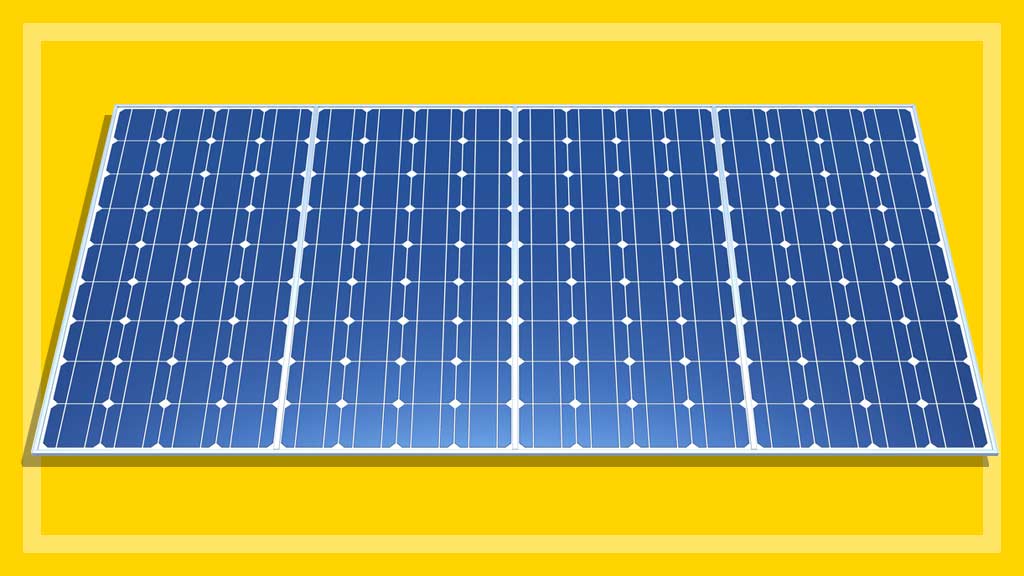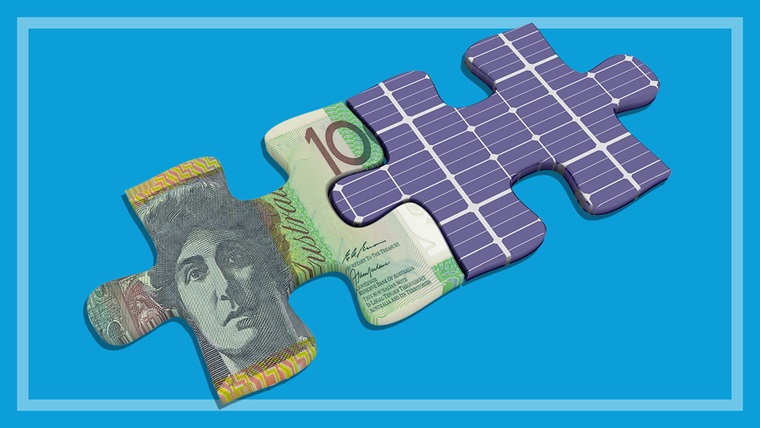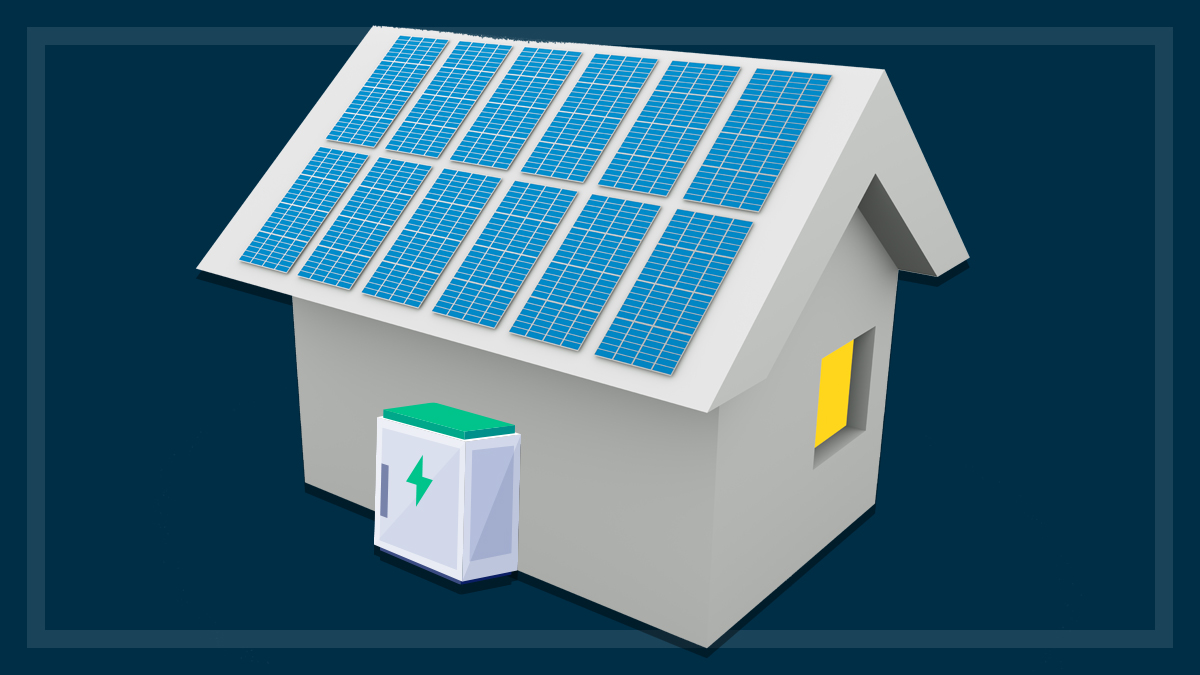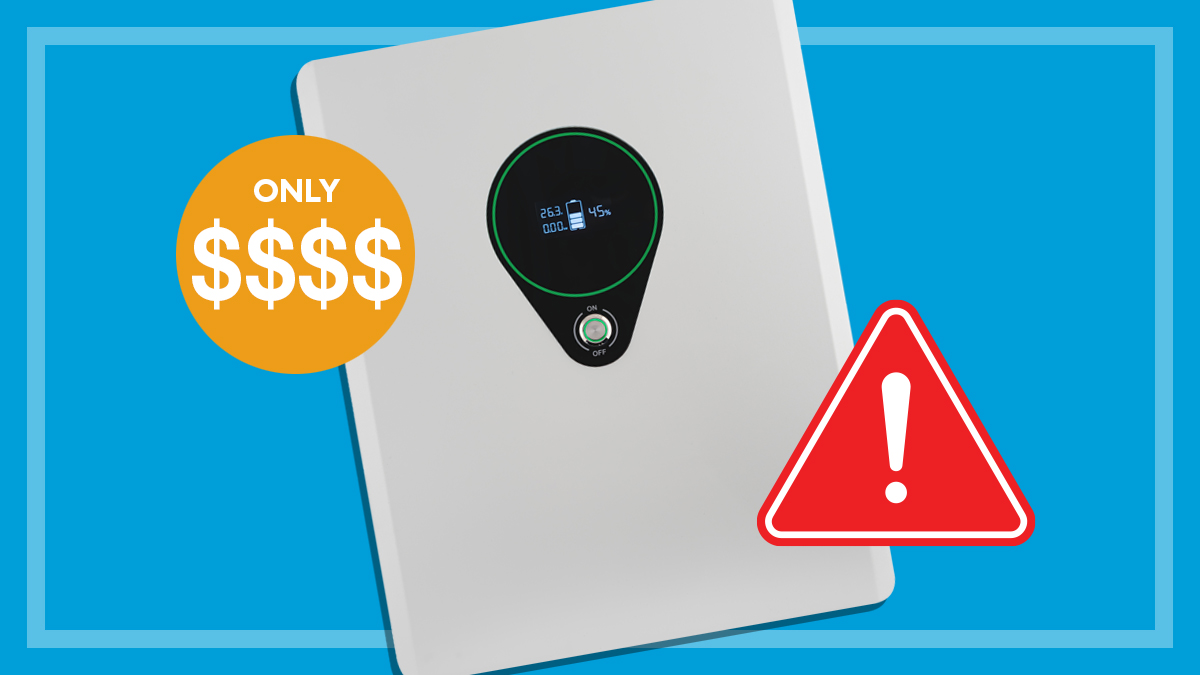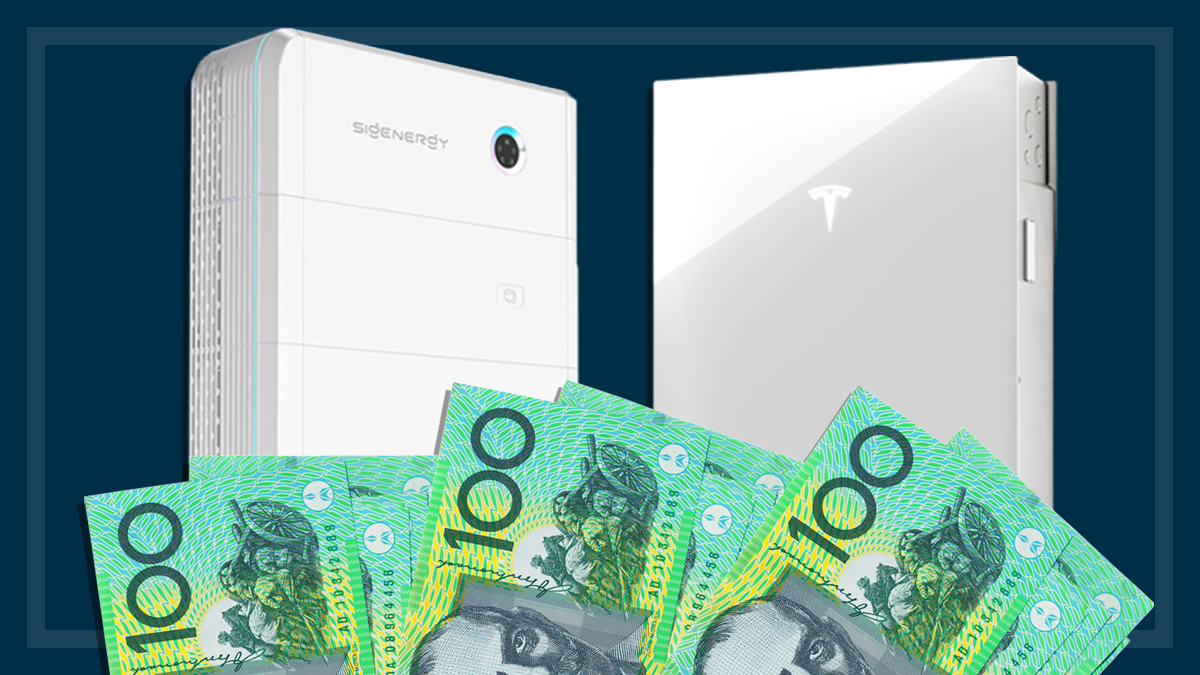Get our independent lab tests, expert reviews and honest advice.
How to buy the best solar inverter
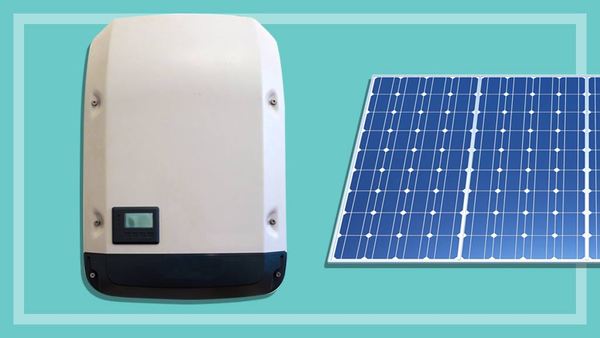
Looking to go solar, or upgrade an existing system? The inverter is the device that turns power from the solar panels into usable power for your home. It’s usually the most complex part of a home’s solar system, and often the first part to fail.
On this page:
There are string inverters, microinverters, hybrids and power optimisers: each has pros and cons, so how do you sift through the quotes and claims and decide what’s right for you? We’ll guide you through the types and brands so you can ask your installer the right questions and get the best option to suit your home and budget.
Why we've partnered with SolarQuotes
We've partnered with SolarQuotes to help you find and buy the right solar, battery, heat pump and EV charger. While we make money if you use SolarQuotes to find an installer, this doesn't influence our ratings. 100% of the money we make goes directly back into our nonprofit mission.
What does a solar inverter do?
The inverter is the box on the wall, or sometimes on the roof, that takes the direct current (DC) generated by the solar photovoltaic (PV) panels and converts it to alternating current (AC) for use in your household electricity circuits. It’s usually the most sophisticated component of the solar PV system and unfortunately it’s also the component most likely to fail first.

Types of inverters
Regardless of the type, inverters should be Clean Energy Council (CEC) approved and should meet the Australian standard AS 4777. All the major brands are fine in these respects, but if your installer offers you a brand you’ve never heard of, ask for assurance that it’s CEC approved.
In most cases, when getting a new solar panel system installed, your choice will be between a system with a single inverter (a string inverter), or a system with microinverters (one for each panel).
The most common inverter type. A string (or several strings) of several solar panels is connected to one inverter. The inverter is mounted on an external wall, typically near the home’s switchboard.
Pros
- A well-established solar panel system design, and the most common.
- Usually the least expensive option.
Cons
- There’s a chance of the string of solar panels under-delivering on power if any of them are shaded or soiled. Because the panels in a string are connected in series to each other, the conventional wisdom says that if one panel loses sunlight (due to shade or soiling), or fails outright, then the output of the whole string may be diminished, usually to the level of the shaded panel.
- However, panel and inverter technology has improved over the years, and recent tests have shown that this power loss is much less of a risk with modern panels and string inverters than previously may have been the case. While an individually shaded panel will still deliver less (or no) power, it appears that the other panels in the string are actually likely to be unaffected, and will keep on working (to the full extent they can in the available sunlight).
- Because most string inverter systems are designed to maximise the performance of the inverter, by matching it to the maximum amount of solar panel capacity it can handle, it’s usually not easy to expand the system later on by adding more panels. You can of course add a new string of panels with their own separate inverter if need be.
- There some risk of the high voltage DC connection (from the panels to the inverter) causing arcing and even fire. This is rare and only happens in cases of faulty or degraded components or substandard installation, but it’s another good reason to go with quality components and installers, and to keep your system maintained.
Brand examples: ABB, Fronius, Goodwe, Huawei, SMA, SolarEdge, Sungrow.
Instead of one inverter for the entire system, each panel can have its own microinverter. The panels and microinverters are usually separate components, but are also available integrated as an ‘AC solar module’ (the Australian manufacturer Tindo makes these).
Pros
- They are good for roofs with variable shading, or with unusual areas that can’t easily fit a large string of panels.
- You can monitor each panel’s performance individually, rather than just the whole system as with a string inverter.
- If the panel falls into shade, its power output will still be reduced, but it will probably deliver more power than an equivalent panel in a string would achieve. However, as mentioned above for string inverters, the advantage of microinverters in shading situations might not be as strong as it once once.
- There’s no risk of DC connections causing arcing or fire as microinverters deliver AC power instead.
- Compared to a good string inverter, microinverters can be a bit less efficient individually, yet an installation with microinverters can be around 12% more efficient overall due to reduced impact from shading, damaged panels and so on.
- It’s usually easier to add more panels to an existing system with microinverters than to do the same with a string inverter system.
Cons
- A microinverter installation is typically a bit more expensive than a string inverter system of the same size.
- Because the microinverters are attached directly to each panel on the roof, they are more exposed to weather than a string inverter on the wall. If one fails, a tradesperson has to get up on the roof to work on it.
Brand examples: Enphase is by far the major microinverter brand in Australia.
- These are string inverters with the added capability to connect a storage battery to the solar system, as well as letting the system keep running in the event of a blackout.
- Hybrid inverters can be more expensive than regular string inverters, but recently the prices of hybrid models have started to fall in line with regular inverters.
Remember: you’ll need a compatible battery
If you’re installing a new solar PV system, but aren’t opting for a battery yet, be cautious about choosing a hybrid inverter in order to be “battery-ready”. Compatibility between inverters and batteries can be highly specific as to which brand/model works with which. You don’t want your future choice of battery to be severely restricted by the brand of inverter you chose.
It’s OK to get a hybrid inverter without a battery if you’re certain you’ll be getting a battery in the very near future, but make sure the battery you’re planning on buying will definitely still be available at that time. Otherwise the compatibility issue above might come back to bite.
If your plan for adding a battery is more like “sometime in the future, maybe”, then for now just get a good regular string inverter (or microinverters) and deal with the battery installation if and when it happens. You can replace your inverter at that time, go for an extra battery inverter or an “all-in-one” battery with its own built-in inverter.
Brand examples: Fronius, Goodwe, Huawei, Selectronics, SMA/Sunny Boy, SolarEdge, SolaX, Sonnen
- If you already have a solar system and you’re happy with your current inverter(s), but now you want to add a storage battery, then rather than swap out the inverter for a hybrid model, you could connect the battery in via a dedicated battery inverter.
- Battery inverters do the job of turning the stored battery power into AC power for your household circuits, and of course also deliver solar power to the battery for storage.
All-in-one batteries
Some batteries such as the Tesla Powerwall 2 are ‘all-in-one’ designs that have a built-in AC battery inverter. If you have microinverters on the panels, then to add a battery you’ll either need a battery inverter, or choose an ‘all-in-one’ battery.
Brand examples: Enphase, SMA/Sunny Boy, Selectronics, Sonnen
- Power optimisers are not inverters, but can be fitted to a system with strings of panels and a string inverter.
- They have a similar effect to microinverters in that an optimiser attached to a solar panel will ensure that, should that panel become shaded, soiled, or fail in some way, the panel will still deliver as much power as it can, and won’t affect the rest of the string’s output.
- They will add to the cost of the installation, though generally less than a full microinverter installation.
Tips for choosing and installing power optimisers:
- You can go for an integrated same-brand installation (inverter and optimisers) such as from SolarEdge, which also allows for software monitoring of the whole system. Alternatively, your installer could install third-party optimisers such as from Tigo.
- Finn Peacock from SolarQuotes points out that a good installer may recommend installing optimisers only on the panels that really need them, i.e. the panels most prone to shading – a cost-effective way to improve system performance.
Brand examples: SolarEdge, Tigo, Huawei
What size inverter do I need?
What size inverter you need depends on the size of your solar panel array.
The size of the inverter is rated in kilowatts (kW) and is the maximum amount of solar-generated power that the inverter can manage.
How to calculate inverter size
- The inverter’s maximum output capacity must be at least 75% of the solar array capacity.
- Or, expressed another way, the array capacity can be up to 133% of the inverter capacity.
This rule is laid down by the CEC, and solar PV systems must follow their rules to qualify for STCs (Small-scale Technology Certificates, the financial incentive scheme or “rebate” that applies to solar panel systems).
If we have a 6kW solar array, the inverter needs to be able to handle a maximum of 6kW of power, so we might simply get a 6kW inverter.
That’s the basic principle, but in fact a solar panel array will rarely if ever generate its full rated maximum, due to various factors including the amount of sunlight, the age of the panels, ambient temperature and so on. So we can get away with a smaller inverter (or looked at another way, we can oversize the solar array).
For our 6kW solar array, we might be able to use a 4.5kW inverter. That’s likely to cost hundreds of dollars less than a 6kW inverter.
Note that if you max out the array size for the inverter, it will be hard to add more solar panels in future unless you add a second inverter or upgrade the existing one.
There may be other limitations that will determine the size of the inverter you can install: the other components of the system, local regulations about solar export to the grid and so on. Your installer should be able to explain these.
Most solar systems are designed to shut down during a blackout, but if you’re willing to pay more, you can get an inverter that keeps your home’s power running.
Most homes with solar are also connected to the main electricity grid. In this situation, the inverter has to provide anti-islanding protection. During a blackout, the grid – and any engineers working on the lines – must be protected from “islands” of electricity generation (such as your solar panels) pumping electricity unexpectedly into the lines.
The simplest way for the inverter to provide anti-islanding protection is to shut down entirely. So, when the inverter senses a grid blackout, it shuts down and you have no household power at all. Your solar panels may still be producing power but it’s wasted.
More sophisticated hybrid inverters can provide anti-islanding protection during a blackout, but still keep the power flowing from the solar panels (and the battery if you have one) into the household circuits. But expect to pay a lot more for such a system, as these inverters are usually more expensive. And you may need more solar panels and battery capacity than you think in order to run the house for a few hours during a blackout. You might choose to allow only critical household circuits to operate in that situation, such as the fridge and some lighting. That might require extra wiring work; again, an extra cost.
Where should a solar inverter be installed?
- String, hybrid and battery inverters should be mounted on a shaded wall, usually near the main switchboard. Inverters are designed to be installed outdoors and are usually weatherproof, but they don’t like excessive heat; it can degrade their performance and lifespan.
- If your inverter can’t be installed in a shaded area, your installer should suggest mounting an awning over it. Specialised awnings are available. In some cases a weatherproof housing might also be needed.
- Also consider security. String inverters can be a tempting target for a savvy thief if they are located in an easily accessible area. Theft is rare but not unknown. Installation behind a fence or locked gated area is best. Some models have anti-theft locking devices built in.
Prices, brands and warranties
How much does an inverter cost?
- String inverters: The price of the inverter depends on its size and brand. You can pay from under $1000 to over $2000 for a string inverter.
- Microinverters: The cost depends to a large extent on the number of panels in the system and their rated output. One microinverter can cost around $200. The usual estimate is that a system with microinverters will cost about 20% more than an equivalent system with a string inverter.
- Optimisers: Similar but slightly lower costs than microinverters. However, adding optimisers to only a few panels that really need them could cost only a few hundred dollars.
- Hybrid inverters: These can cost in the $1000-$2000 range, but many models cost $3000 or more.
- Battery inverters: If a battery needs a separate battery inverter, this will typically add $2000-$3000 to the overall cost of the installation.
What is the best solar inverter brand?
It’s worth investing in a good name-brand inverter as it is a vital, hard-working component of the solar PV system. Enphase, Fronius and SMA are generally considered top brands and rate highly for satisfaction in our CHOICE member survey. There are other well-considered brands too.
Warranties
- Your inverter should last at least five years – and will usually have paid for itself in that time – but ideally should last 10 years or more.
- Inverter warranties are typically five years, but look for warranties of 10+ years to cover the likely lifespan of the unit. For example, SolarEdge offers 12-year warranties and Fronius offers a five-year warranty with a free extra five years if you register the product online.
- Extended warranties are often available but you will usually pay extra. We don’t usually recommend extended warranties for most products, but for peace of mind they may be worth considering in the case of your inverter, especially if you can negotiate one for low cost.
- Finn Peacock from SolarQuotes has looked into inverter manufacturer support for consumers who have a problem with their inverter but can’t get help from the original installer, for example because the installer is no longer in business. The good news is that nearly all brands have stated that they’ll assist consumers in these cases and will support direct warranty claims.
- Glen Morris from the Smart Energy Lab in Victoria points out that as long as your system (including the inverter) has already paid for itself, as it usually will after about five years or so, it’s not necessarily a disaster if your inverter fails outside its warranty period. While it’s certainly inconvenient to go without solar for a while, and to pay for a new inverter, you’re likely to get a better, more sophisticated inverter for the money than you could a few years previously.
Getting to know your inverter
Once it’s installed, familiarise yourself with your inverter. It will usually have a display and some indicator lights on it; get to know what these mean.
Whether you opt for smart software monitoring or just a visual check on the inverter’s indicator panel, it’s a good idea to periodically check in on your solar system. You’ll spot any problems early, and it will help you shift your electricity consumption to make maximum use of your own solar power. You don’t want to find out the hard way from an electricity bill that your system has been under-performing and you’ve been using grid power instead of solar!
Indicator panel and lights
- If the inverter has a display panel, this can show a range of data such as current power production, long term data and more.
- Indicator lights will typically show whether the system is running normally, whether there’s a fault, whether the system is currently feeding power to the grid, and so on.
- Have a look at the display/indicators from time to time, say monthly, to make sure there are no errors or warnings needing attention.
Monitoring systems
- Many inverters and optimisers offer more sophisticated monitoring options. This is often done by a Wi-Fi or Bluetooth link to your home router. Your system’s performance is logged and can be accessed via an app or a website. You can see how your system performs across the day and across seasons, track power fed into the grid and more.
- Note that if the inverter or optimiser brand goes out of business, the monitoring system might no longer be supported. Another good reason to go with major brands.
- If the inverter doesn’t have a smart monitoring function, you could consider paying for a third-party monitoring system, such as Solar Analytics. These systems may involve ongoing fees for the service, but can deliver comprehensive reporting in return.
- Glen Morris agrees that monitoring is useful, but in his experience most people lose interest in doing this after the first few months. Don’t pay for sophisticated monitoring if you aren’t going to use it.
Security
If your inverter is connected to the internet, make sure your home network is properly secured with encryption and passwords. Follow the inverter manufacturer’s instructions for secure online connections.
Findings from CHOICE’s solar survey
Some key findings about inverters from our 2018 member survey on solar PV systems.
- CHOICE members reported buying many different inverter brands. The most common brands were SMA/Sunny Boy (28%) and Fronius (12%).
- The vast majority of respondents rated the performance of their panels, inverter and batteries positively.
- While we found very little difference in satisfaction between solar panel brands, satisfaction with inverter brands did differ, with Enphase, Fronius and SMA rating significantly higher than Sunny Boy and Aurora.
- Sunny Boy is a model name used by SMA, so they are in fact the same brand, but many respondents identified their inverter as a Sunny Boy while others identified theirs as SMA. Sunny Boy respondents tended to have systems of 2kW or less, which suggests they might tend to be older systems too.
- A whopping one-third of respondents (33%) have experienced problems with their system.
- The largest portion (20%) of those problems were with the inverter. Other issues reported were a decline in performance, problems due to a cable or connector, the panels themselves, and the framing or mounting structure.
Inverter issues
- Half the people who’ve had a problem with their system have had the inverter replaced.
- 83% of inverter problems happened in the first five years (when they were likely to be under warranty).
- 98% of faulty inverters were replaced within the first nine years.
- Only 3% of Enphase inverter owners reported problems. This is significantly lower than owners of Aurora (17%), Fronius and SMA inverters (both 19%).
- Some respondents say they’ve had their inverter replaced multiple times.

